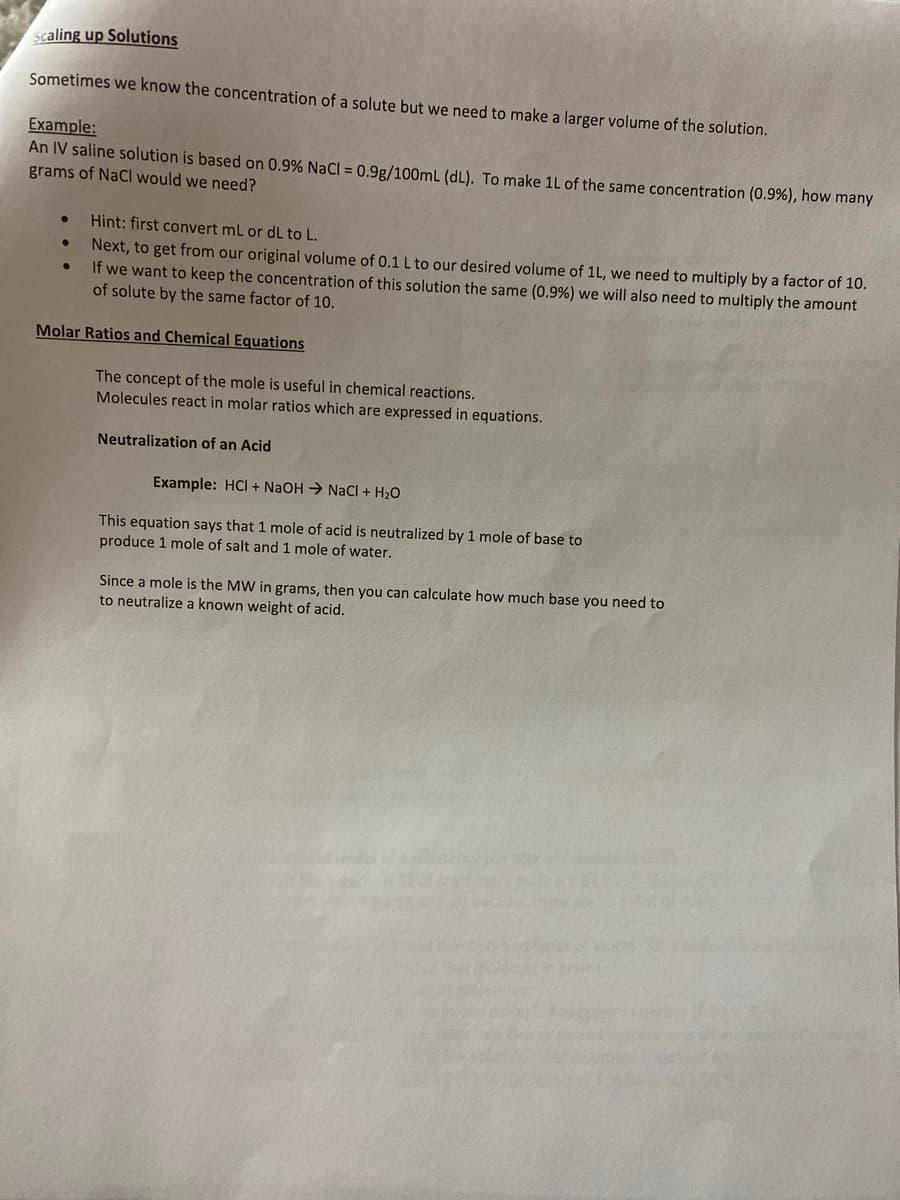tô make a larger volume of the solution. Example: An IV saline solution is based on 0.9% NaCl = 0.9g/100mL (dL). To make 1L of the same concentration (0.9%), how many grams of NaCI would we need? %3D
tô make a larger volume of the solution. Example: An IV saline solution is based on 0.9% NaCl = 0.9g/100mL (dL). To make 1L of the same concentration (0.9%), how many grams of NaCI would we need? %3D
Chemistry: Principles and Reactions
8th Edition
ISBN:9781305079373
Author:William L. Masterton, Cecile N. Hurley
Publisher:William L. Masterton, Cecile N. Hurley
Chapter1: Matter And Measurements
Section: Chapter Questions
Problem 71QAP: Consider the following solubility graph. (a) At point A, how many grams of the compound are...
Related questions
Question

Transcribed Image Text:scaling up Solutions
Sometimes we know the concentration of a solute but we need to make a larger volume of the solution.
Example:
An IV saline solution is based on 0.9% NaCI = 0.9g/100mL (dL). To make 1L of the same concentration (0.9%), how many
grams of NaCl would we need?
Hint: first convert mL or dL to L.
Next, to get from our original volume of 0.1 L to our desired volume of 1L, we need to multiply by a factor of 10.
If we want to keep the concentration of this solution the same (0.9%) we will also need to multiply the amount
of solute by the same factor of 10.
Molar Ratios and Chemical Equations
The concept of the mole is useful in chemical reactions.
Molecules react in molar ratios which are expressed in equations.
Neutralization of an Acid
Example: HCI + NaOH → NaCI + H2O
This equation says that 1 mole of acid is neutralized by 1 mole of base to
produce 1 mole of salt and 1 mole of water.
Since a mole is the MW in grams, then you can calculate how much base you need to
to neutralize a known weight of acid.
Expert Solution
Step 1
Concentration: Concentration in chemistry refers to quantity of solute (moles of solute) present in known solvent (volume). It may be defined in terms of Molarity and Molality.
Trending now
This is a popular solution!
Step by step
Solved in 2 steps

Knowledge Booster
Learn more about
Need a deep-dive on the concept behind this application? Look no further. Learn more about this topic, chemistry and related others by exploring similar questions and additional content below.Recommended textbooks for you

Chemistry: Principles and Reactions
Chemistry
ISBN:
9781305079373
Author:
William L. Masterton, Cecile N. Hurley
Publisher:
Cengage Learning

Chemistry: Matter and Change
Chemistry
ISBN:
9780078746376
Author:
Dinah Zike, Laurel Dingrando, Nicholas Hainen, Cheryl Wistrom
Publisher:
Glencoe/McGraw-Hill School Pub Co

Chemistry: Principles and Reactions
Chemistry
ISBN:
9781305079373
Author:
William L. Masterton, Cecile N. Hurley
Publisher:
Cengage Learning

Chemistry: Matter and Change
Chemistry
ISBN:
9780078746376
Author:
Dinah Zike, Laurel Dingrando, Nicholas Hainen, Cheryl Wistrom
Publisher:
Glencoe/McGraw-Hill School Pub Co